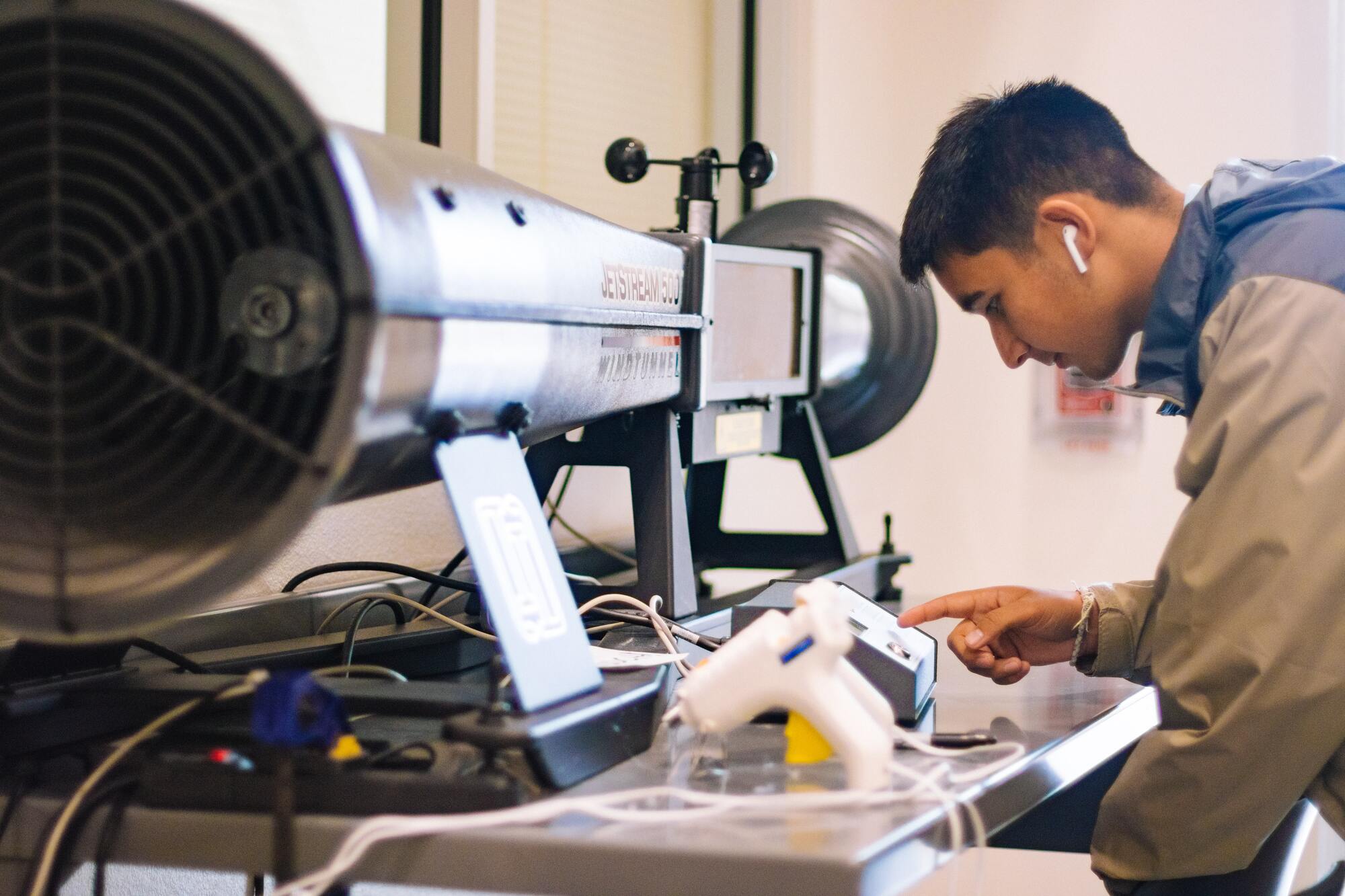How to Evaluate If an Engineering Program Is a Good Fit

With so many colleges offering engineering programs, it can be challenging to determine which will be the best fit for you. As you research schools, use the below factors as a guideline to help you make an informed decision.
ABET Accreditation
The first and most important factor to consider when evaluating an engineering program is its accreditation, by which an outside agency evaluates a college or university to ensure that it meets quality standards. The Accreditation Board for Engineering and Technology (ABET) is the most widely recognized authority.
ABET is a non-profit organization that evaluates engineering programs based on standards to ensure students receive a high-quality education. These standards cover several areas, including curriculum, faculty, facilities, and student outcomes. In addition, employers will look to see if your degree is from an ABET-accredited program. The easiest way to determine if a program is accredited is with the ABET-Accredited Program Search Tool.
Programs and Majors
Engineering is a broad field, and colleges may have a variety of programs specializing in different areas. Therefore, when choosing, it’s important to know if the schools you’re considering offer the specific area of engineering you’re interested in. Below are the most common areas of study.
- Aerospace
- Architectural
- Biological & Agricultural
- Chemical
- Civil
- Computer Engineering
- Electrical
- Engineering Management
- Environmental
- Industrial/Manufacturing/Systems
- Mechanical
- Metallurgical & Materials
- Mining
- Nuclear
- Petroleum
It’s also important to look at the depths of the programs. You can do this by looking at the number of students in the major, the number of professors and instructors, and the specific classes offered. For example, if a program is highly rated but only has two students, it may not have the breadth of faculty as another program.
Rankings
The US News & World Report is the most visible source for ranking undergraduate programs, but it’s not the only one. They share their methodology, which in part relies on surveying top academics for their opinions.
It must be remembered that rankings will differ based on the methodology used. Other ranking sources, along with with their methodologies, are below.
- College Factual looked at 355 schools to compile their 2023 rankings of the top engineering schools. Factors they use in their analysis include accreditation, average test scores, educational resources, degree completion, and post-graduation earnings.
- EduRank bases its rankings on the best engineering programs by analyzing citations in more than 8 million academic papers by 4,624 universities.
- QS Top Universities, which uses academic and employer reputation, faculty and student ratio, and research citations.
Gender Parity
A more diverse engineering program will likely produce more innovative and well-rounded graduates. When considering a college, the engineering program may have an equal number of men and women, but it can vary widely in engineering programs.
Below is an example of gender parity in engineering programs at Purdue University.

Beyond the number of women in a particular engineering program, other questions to ask may include the following:
- Does the college have initiatives to support and encourage female engineering students? For example, is a Society of Women Engineers chapter on campus?
- Are there female faculty in the engineering department?
- What is the overall campus culture regarding gender diversity and inclusiveness?
Retention and Graduation Rates
Retention rates reflect the percentage of students who return, enroll in a class, and continue to make progress toward a degree. High retention rates suggest high student satisfaction rates and that they’re receiving support from the school.
Graduation rates are usually presented as either a four-year or six-year rate. However, for students participating in a co-op, completing a degree can take six years, which isn’t seen as unfavorable.
All students, regardless of major, should look at the retention and graduation of colleges under consideration as they provide insight into student satisfaction and success. Information on both metrics can be found at the National Center for Education Statistics College Navigator site.
Internships and Co-Ops
College cooperative education programs, also known as co-ops, offer students the opportunity to work in a full-time, paid position for an employer for a fixed period of time, usually a semester. During a co-op, students alternate work and school semesters so they can apply academic knowledge in a real-world setting and get hands-on experience. Schools usually offer co-op programs that allow for one, two, or three semesters of work. These programs also enable students to earn money while attending school, which can help offset tuition and other costs. Note that students don’t pay tuition during the semesters they’re working.
On the other hand, internships are shorter-term programs, typically lasting between one and three months, during which students may work part-time or full-time. Internships are designed to give a taste of what it’s like to work in a specific field or industry and provide students with opportunities to gain experience, build their network, and develop skills.
Both programs help students better understand the practical applications of what they learn in the classroom. They also gain work experience and build their resume making them more attractive to potential employers after graduation.
Outcomes
The ultimate goal for most students is a successful career, and engineering students are no different. As a result, college career centers usually provide a wealth of information on their websites.
Below is an example of some of the information available from the Carnegie Mellon University Career & Professional Development Center, which is representative of most colleges.

Students can also look at the companies attending a college’s career fairs to learn what organizations are recruiting at that particular school.
Using LinkedIn to see what companies and roles a school’s alumni are currently in can provide insight into career pipelines.
One organization, College Transitions, has compiled a list of the top feeder undergraduate programs to the 12 companies most frequently cited by engineering majors as “most desirable to work for.”
College Scorecard allows students to search and compare median earnings for specific programs of study. The college career center will usually have this information as well.
Maker Spaces
Another way to evaluate engineering programs is to compare the facilities. For example, maker spaces provide tools and technology for students to flex their creative muscles. Shared resources include 3D scanning and printing, tools for metalworking, woodworking, welding, CNC mills, and lathes. Many also provide staff and experts to guide students on topics like intellectual property, protection, licensing, and even aspects of running a startup. Some examples of maker spaces include Case Western’s Sears think[box] and North Carolina State University’s Makerspace.
Current Students
Via a college’s admissions office, they may have a program that allows prospective students to meet virtually with a current student to get their perspective on the school and program. These interactions can provide a look at the campus and program culture from a student viewpoint.
If a college uses the app ZeeMee, it also provides a less formal way for prospects to connect with current students. Of course, social media like Instagram, Facebook, or Twitter can also provide a window into the culture of colleges and even specific departments.





